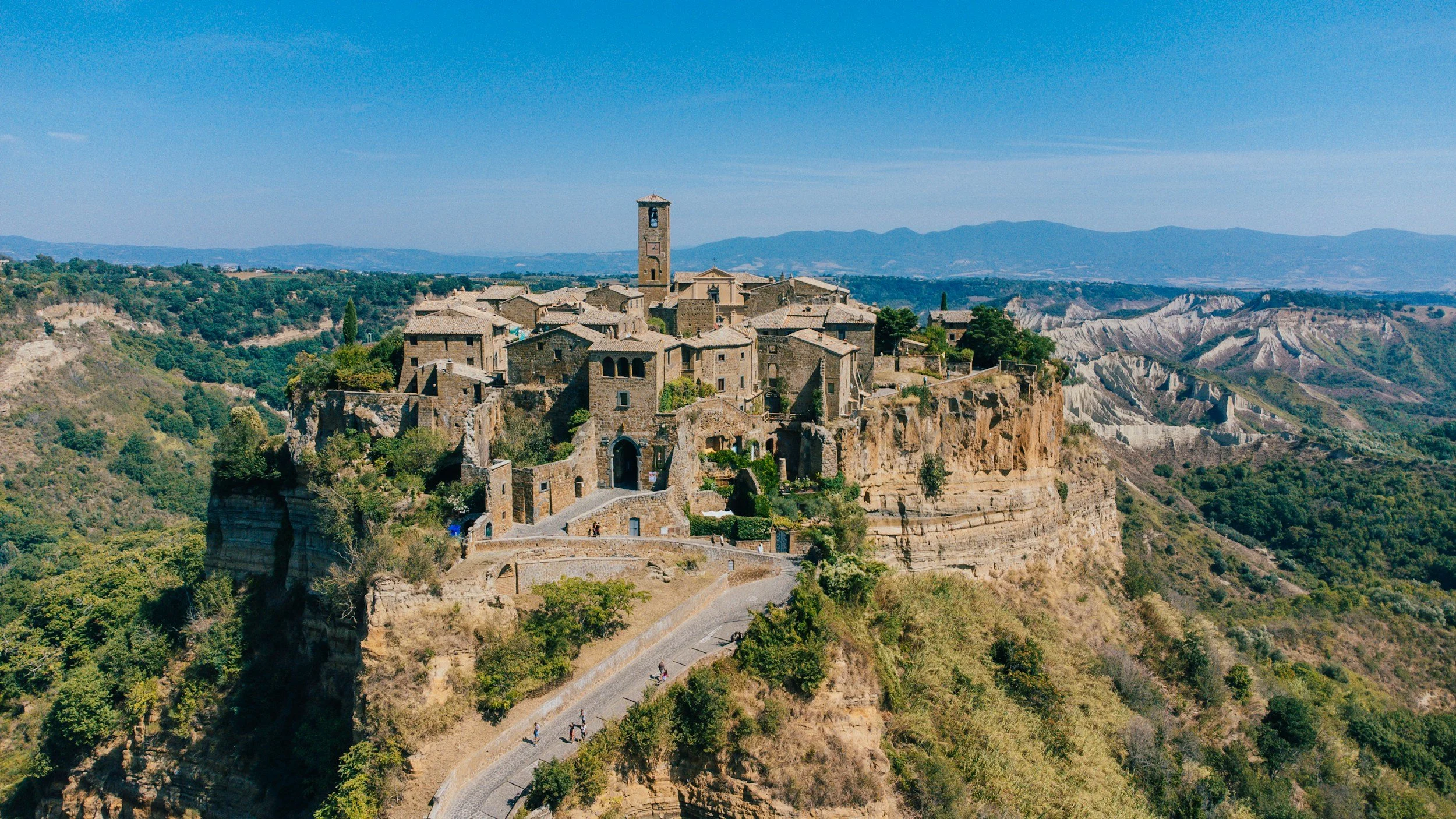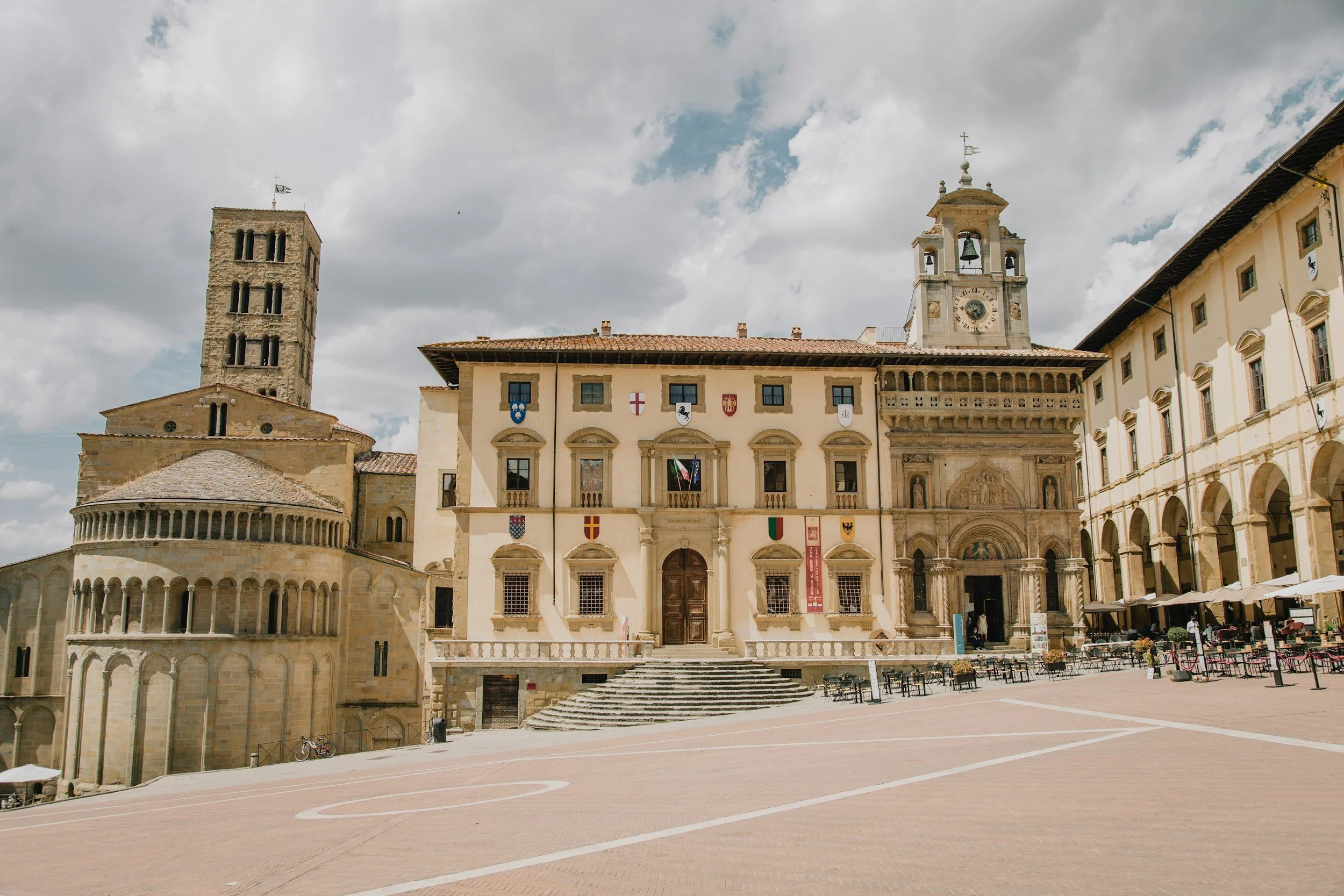Art Towns in Central Italy: Hidden Treasures Between History and Beauty
Art Towns in Central Italy: Hidden Treasures Between History and Beauty
Discovering the Artistic Heart of Central Italy
When travelers think of Italian art, they often imagine the big cities — Florence, Rome, or Venice. But the true soul of Italian art lives in the small towns and medieval villages scattered across central Italy, where centuries of creativity meet timeless beauty.
These art towns in central Italy preserve a unique balance between medieval architecture, Renaissance masterpieces, and modern art. They are living museums surrounded by olive groves, cypress trees, and rolling Tuscan hills — places where you can still wander narrow alleys and main squares without crowds, and feel the quiet rhythm of history.
San Gimignano: The Medieval Manhattan
Perched on a hill in southern Tuscany, San Gimignano is a beautiful Tuscan town and one of the most iconic medieval towns in Italy. Famous for its towering skyline — a symbol of power among rival families — it’s often called the Manhattan of the Middle Ages.
San Gimignano
This UNESCO World Heritage Site dazzles visitors with its wonderful architecture, medieval walls, and frescoes by Renaissance masters. Inside the Civic Museum and Collegiata of Santa Maria, you’ll find a vast collection of beautiful painting, from Gothic altarpieces to early Renaissance panels.
The town’s main square, Piazza della Cisterna, is surrounded by local stone buildings, cafés, and artisan shops — a perfect spot to enjoy delicious food and a glass of Vernaccia di San Gimignano, one of Tuscany’s most elegant white wines.
Urbino: The Ideal Renaissance Town
In the Marche region, far from the beaten path, lies Urbino — an ideal Renaissance town and a UNESCO World Heritage Site. Built by Duke Federico da Montefeltro in the 15th century, it became a model of balance and proportion known as the ideal city.
Here, the Palazzo Ducale houses the National Gallery of the Marche, with several rooms filled with masterpieces by Piero della Francesca, Raphael, and other Renaissance masters. The historic centre still reflects the dream of harmony between art, architecture, and humanism.
The surrounding landscape of hills and olive groves enhances its serenity. Urbino’s charm is not just in its important museums, but in its narrow streets, beautiful views, and authentic local culture — a reminder that art was once part of everyday life.
Pienza: The Dream of an Ideal City
A UNESCO World Heritage Site in the Tuscan hills, Pienza was transformed in the 15th century by Pope Pius II into an ideal Renaissance town. Its main square, Piazza Pio II, and Town Hall were designed to represent perfect proportions — a beautiful town planned according to philosophical and aesthetic ideals.
Pienza
From the cathedral of Santa Maria Assunta to the Palazzo Piccolomini, Pienza is an architectural dialogue between faith, reason, and beauty. The surrounding landscape, dotted with olive groves and cypress-lined roads, makes it one of the most romantic hill towns in central Italy. Among its charming streets, Kiss Street stands out as a narrow cobblestone lane known for its romantic atmosphere and scenic views of the Tuscan countryside.
Civita di Bagnoregio: The Dying City
Suspended between earth and sky, Civita di Bagnoregio is a tiny town so fragile that it’s often called the dying city. Founded by the ancient Etruscans and reshaped after landslides and World War II, it stands isolated on a volcanic plateau overlooking the Tiber Valley, situated in the central area of Italy, making it a notable destination in the heart of the region.
Civita di Bagnoregio
Walking across its narrow footbridge feels like stepping into a fairytale village — quiet, ethereal, and hauntingly beautiful. With narrow streets, medieval walls, and stone houses painstakingly restored, it’s one of Italy’s most photogenic and hidden gems.
Though small, it hosts seasonal exhibitions of contemporary art and sculpture, blending ancient beauty with modern creativity.
Arezzo: Renaissance Art and Living Culture
Arezzo may not be as famous as Florence, but its artistic heritage is equally profound. Once part of the Western Roman Empire, it later flourished during the medieval period and early Renaissance.
Arezzo
Inside the Church of San Francesco, visitors can admire Piero della Francesca’s celebrated fresco cycle, The Legend of the True Cross, a masterpiece of perspective and storytelling. Nearby in Siena, Ambrogio Lorenzetti’s renowned frescoes depicting good and bad government offer another outstanding example of central Italy’s rich tradition of narrative art. The Piazza Grande hosts the Giostra del Saracino, a medieval joust still held twice a year — turning this historic town into a festival of color and tradition.
Arezzo’s mix of Roman ruins, medieval churches, art galleries, and vibrant markets makes it one of the most beautiful towns in central Italy — a lovely town that perfectly unites past and present.
Off the Beaten Path: Art and Life Beyond the Big Cities
From hill towns like Cortona and Montepulciano to smaller places such as the small town of Fermo and the little village of Offida along the Adriatic coast, central Italy is full of small towns where art, history, and life still intertwine. Beyond these well-known destinations, travelers are encouraged to explore other towns that offer their own unique charm and history.
Each little town offers something unique — a fresco in a medieval church, a main street lined with local stone houses, a small square filled with laughter. These are the places where you can still feel the connection between Italian art, natural beauty, and community. For travelers seeking authentic experiences, discovering a hidden gem like Offida can be especially rewarding.
Flavors of Central Italy: Food and Wine Traditions
In central Italy, the pleasures of art and history are matched only by the region’s extraordinary food and wine. Here, every medieval town and hill village offers a feast for the senses, where the flavors of the land are as rich and layered as the frescoes in a civic museum or the masterpieces in a national gallery.
The rolling Tuscan hills and sun-drenched valleys are home to some of the world’s most celebrated wines. From the vineyards surrounding the beautiful town of Montepulciano to the medieval villages near San Gimignano, the landscape itself seems to pour into every glass of Chianti, Brunello, or Vernaccia. Many small towns host family-run wineries where visitors can sample these iconic wines, often paired with local cheeses and cured meats, all while gazing out over olive groves and cypress-lined roads.
Olive oil is another treasure of central Italy, pressed from ancient groves that have shaped the region’s cuisine for centuries. The golden oil, fragrant and peppery, is a staple on every table — drizzled over rustic bread, fresh vegetables, or hearty soups. In the narrow alleys of a historic town, you might stumble upon a tiny shop offering tastings of oils infused with wild herbs, or a local producer eager to share the secrets of their craft.
The region’s culinary traditions are deeply rooted in its history and landscape. Dishes like ribollita, a robust soup of bread and beans, and pappardelle al cinghiale, pasta with wild boar ragu, reflect the rustic bounty of the countryside. In the main squares of beautiful towns like Pienza or Cortona, trattorias serve these specialties alongside cantucci con vin santo, a sweet finish to a memorable meal.
Food and wine festivals bring these traditions to life, transforming small squares and main streets into vibrant celebrations. Events like the Festa della Vendemmia in the Chianti hills or the food fairs in Siena invite visitors to join locals in tasting, music, and merriment — a true immersion in the living culture of central Italy.
For those eager to delve deeper, guided tours and cooking classes offer a hands-on introduction to the region’s culinary heritage. Whether learning to knead pasta in a sunlit kitchen or exploring the cellars of a medieval town, these experiences reveal the artistry behind every dish and bottle.
In central Italy, every meal is a journey through history, landscape, and community. The flavors you discover here — from the first sip of wine in a UNESCO World Heritage Site to the last bite of a rustic dessert in a tiny town — are as unforgettable as the art and architecture that surround them. To taste central Italy is to savor the very soul of its beautiful towns and timeless traditions.
The Spirit of Central Italy
Exploring the art towns in central Italy means slowing down, taking the train to a tiny town, and walking through centuries of wonderful architecture and human genius. It’s about finding inspiration not only in museums but in the main squares, olive groves, and the surrounding landscapes that shaped the Renaissance masters.
Whether it’s the ideal city of Pienza, the dying city of Civita di Bagnoregio, or the artistic heart of Urbino, each of these places tells a chapter of Italy’s eternal story — one that’s written in stone, color, and light.





